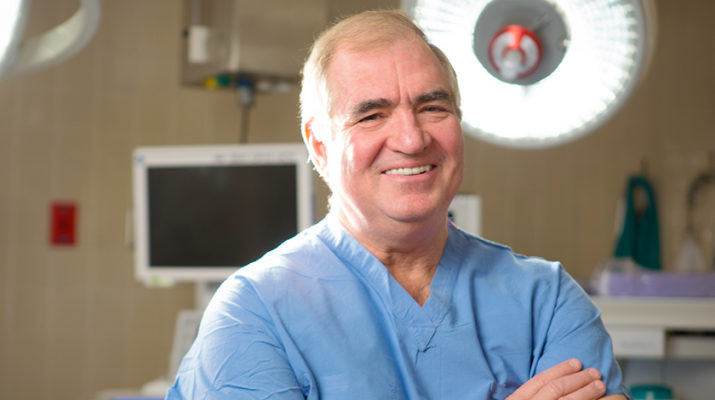By Ernst Lamothe Jr.
Robotic surgery has been around for some time but still can remain a mystery to some patients.
They hear the term and think they know exactly what it means. Not only are many incorrect but they are unaware of the vast changes and number of procedures where the new technology has become commonplace.
“The advent of robotic surgery has really changed the profession with some surgeries having tremendously better outcomes for the patients,” said physician Steven D. Schwaitzberg, chairman of the department of surgery at the University of Buffalo. “It is still something that you should discuss with your doctor first because not all surgeries need to be done robotically.”
Schwaitzberg would like the public to understand more about the technology and had several thoughts and facts to share about robotic surgery.
1. Latest trends
As technology continues to move forward in health care, it has allowed robotic surgery to enter some previously uncharted territory. The latest trend is using robotics for outpatient hernia and gallbladder surgeries.
Schwaitzberg said more than 1 million people have their gallbladders removed every year and about 8 percent are using robotic surgery.
“This is something we have definitely seen an increase in over the last few years,” he said. “There are instances where we truly see a difference in recovery time.”
In addition, he has seen increases in robotics for hysterectomies as well as hernias. Thanks to innovations in robotic technology, surgeons can perform hernia repair surgery through tiny incisions rather than the large incisions associated with traditional open surgery. The result is less damage to surrounding tissues, less pain for the patient and a much quicker recovery — often within days.
2. You are still getting a real doctor
People hear robotics and their minds wander to maybe the unimaginable. While robotic technology has taken the health care industry to some of those unimaginable heights, there is not a robot that is doing the procedure. Robotic surgery is a set of instruments for doing laparoscopic surgery done through small incisions and a camera.
3. The human touch
“The single-most popular myth or stereotype is that people think the robot is going to do something on its own and that is not the case,” said Schwaitzberg, who is also the director of surgical planning for Great Lakes Health. “Each robotic procedure is performed by a surgeon sitting at a console directing the robotic arms for every movement.”
4. There is training involved
A surgeon can’t simply perform robotic surgery just because he or she wants to. The first step in learning how to make the most out of what these tools have to offer is to start by watching robotic surgery. As part of robotic surgery training, doctors view live surgery being performed by other surgeons.
Often, this includes real-time instruction at the same time. Surgery observation can take place before or after teaching discussions. This gives surgeons a chance to ask any questions they have about the equipment. After observing several robotic surgeries, surgeons can try the tools out themselves with a surgeon already trained on the instrument.
“We undergo training courses on how to use robotics and that includes the entire surgical team,” said Schwaitzberg. “We also perform in-service training on how to position the robot’s arms, how to bring it to the patient safely in the operating room and how to clean it.”
5. Smaller incision and scarring
Even with successful surgeries, people sometimes complain about scarring. When it comes to procedures such as rectal and other cancers near the pelvis, previously it might require large incisions. But with robotics, the camera and instruments are introduced through ports that allow access to the inside of the patient.
“Slowly, people are understanding the benefits of robotic surgery,” he said. “It really helps the surgeon focus on cases that depend on exact precision. Cancers that are in the lower pelvis region are perfect examples because the robotic arms allow for better movement in that location.”
6. Better health
Doctors stress that good healthy habits can go a long way for not even needing surgery. But also, being in better health can help ensure you are eligible for surgeries and that starts with avoiding bad habits like smoking.
By now, we all know the information about smoking being bad for individuals and the overall population. While statistics are encouraging with the number of young smokers dropping with each year, issues persist because other elements have filled in the void of tobacco.
“A patient who is a good candidate for general surgery is a good candidate for robotic surgery,” said Schwaitzberg. “We tell our patients they should refrain from smoking.”
In addition, exercising is key. Exercising at any age is essential to good health. It becomes even more paramount as you get older because you are fighting the uphill battle of aging. Physicians recommend regular exercise even as simple as taking regular walks. Even 20 minutes of activity a day, three times per week, provides benefits. Thirty minutes every day is even better.

